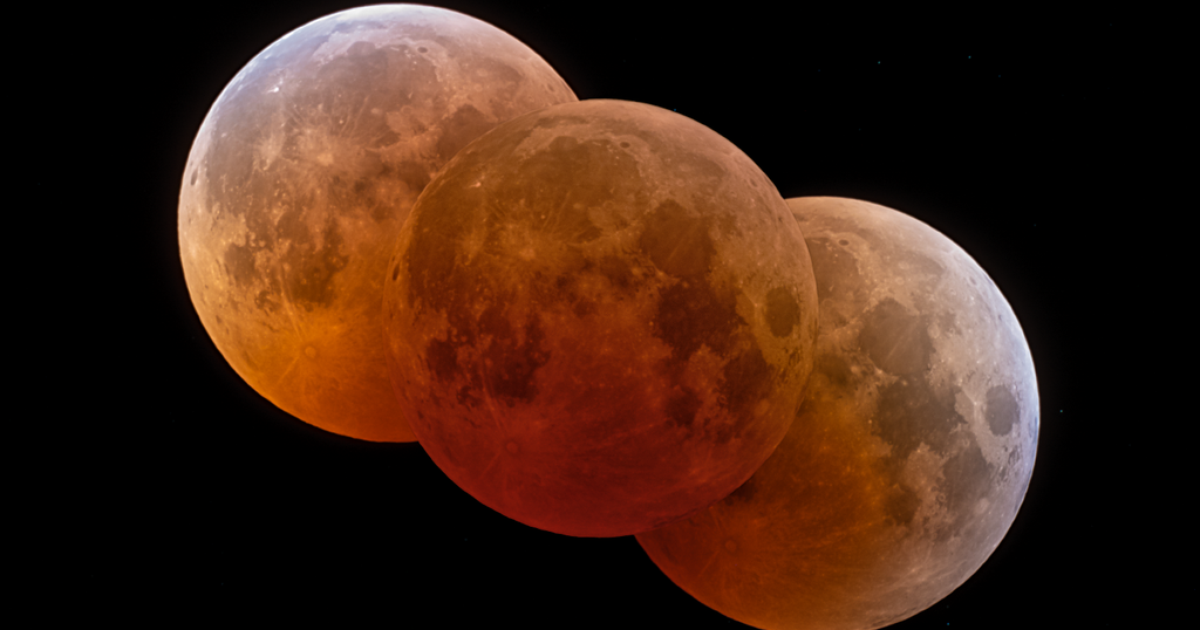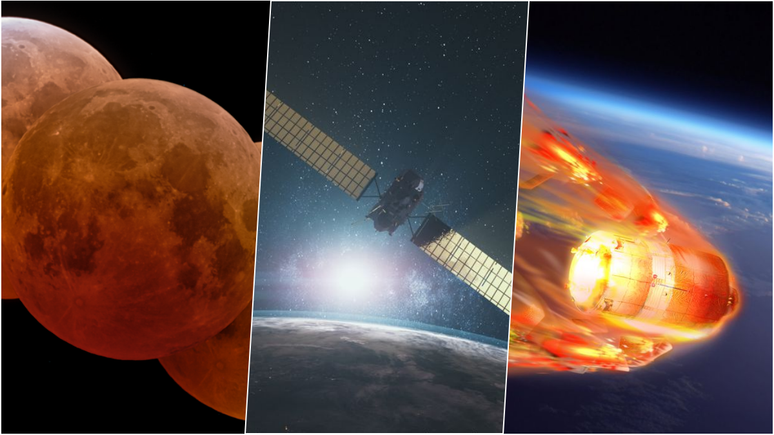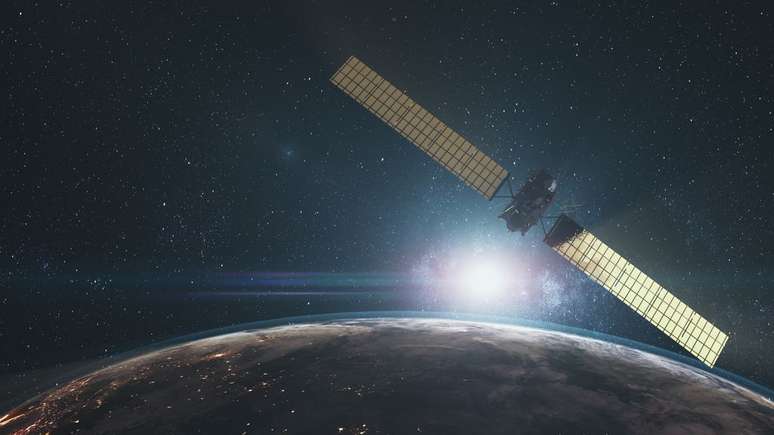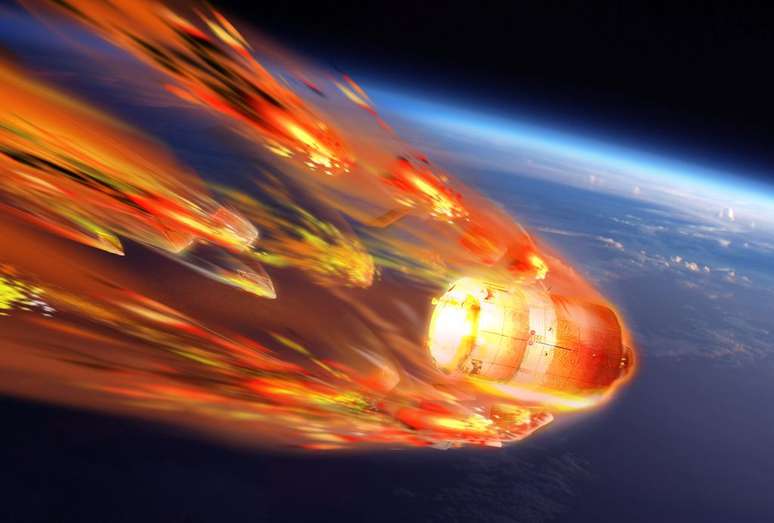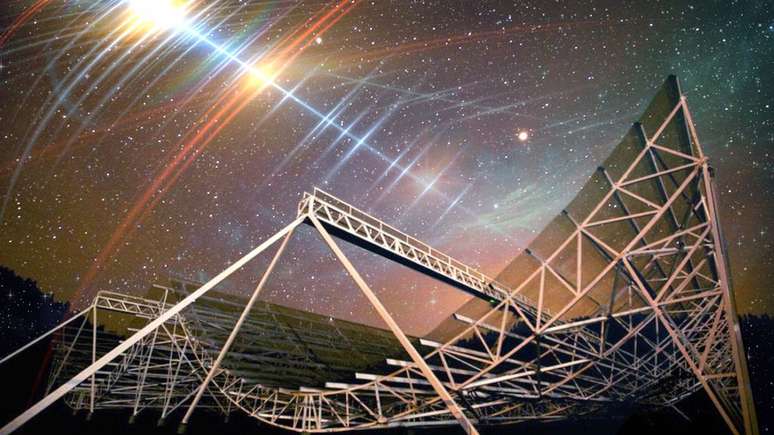See the most important space news from the week of October 21 to 27, 2023 and stay up to date with everything that is most important in the world of astronomy!
October 28
2023
– 10:01 pm
(Updated at 10:58 p.m.)
Satellites were one of the topics that had the greatest impact during the week. the reason? Some of them are dangerous, at least according to the US Federal Aviation Administration. Also of concern is the close proximity of a Russian satellite to another spacecraft in orbit.
Other news includes a lunar eclipse on Saturday, tests of a future Indian mission, and the largest simulation of the universe ever conducted. Check out this news and more in our weekly digest.
Partial lunar eclipse
Saturday (28) A partial lunar eclipse occurredWhich unfortunately was not visible in Brazil. Some areas in the northeast were able to observe the end of the event, during the penumbra phase (when the Moon is in the Earth’s lightest shadow).
Areas where the partial eclipse was observed include Africa, Europe, Asia and parts of Australia. However, for those who couldn’t rely on their luck, there was a live broadcast that anyone could watch.
A Russian satellite is approaching another
Hey The Russian satellite Luch (Olymp 2) approached. Another spacecraft in Earth’s orbit, which caught the attention of many. Data released by startup Slingshot Aerospace revealed that it had already made several approaches to other satellites and slowed down until it was within 60 km of another satellite in geostationary orbit (GEO).
To give you an idea of the risks, the Luch 2’s average speed is 11.067 km/h, which is more than 3 km/s; This means that a distance of 60 kilometers is not very safe. However, as he slowed down, the collision was avoided.
The supposed danger of Starlink satellites
The Federal Aviation Administration (FAA), the aviation regulatory body in the United States, published a report stating that satellites Starlink will be responsible for 85% of the risks For people on the ground and for flying during re-entry into the atmosphere.
According to the document, the Starlink satellite constellation is expected to collect a total of 28,000 pieces of space debris by 2035. This would present a potential risk of someone being injured or killed every two years by one of these objects, the FAA says. SpaceX responded by saying that these allegations are “ridiculous, unjustified and inaccurate,” adding that “the analysis is deeply flawed.”
Indian spaceship flight experience
Have you ever imagined what it would be like to travel on a space rocket, but from the other side the outside? This is the experiment carried out by A New video from the Indian space agency ISRO He provides. It’s not quite a VR immersion, but it’s enough to give us an idea of what the flight will be like, including the parachute drop.
Finally, here is the ON BOARD video from yesterday’s TV-D1 mission! 🎥 #ISRO #Gaganyanpic.twitter.com/U9Er66zCbc
— ISRO Spaceflight (@ISROspaceflight) October 22, 2023
The video was recorded in TV-D1 flight test, an uncompressed version of the Ganganyan spacecraft’s crew module and its escape system. The test launch took place at the Satish Dhawan Space Center on Saturday (22).
The largest and most extensive simulation in the universe
A new instrument elucidates the history and structure of the universe on a large scale, over a period of 13.75 billion years. This is the biggest Simulating an already created universe To this day, it reveals details of the formation of galaxy clusters at different wavelengths.
In the video above, Flamingo (the name the simulation received from its creators) shows the evolution of two massive, neighboring galaxy clusters. The main graph shows the density and temperature of the gas, with white indicating the hottest and densest gas. Notice how each group varies over time but gets similar final blocks.
One of Ingenuity’s longest journeys
The helicopter Ingenuity has completed its 63rd flight On Mars, on one of its longest paths: 579 meters, second only to the record set in 2021. Below, a photo taken during the path.
Versatility is going the distance!
the #Mars helicopter It completed Flight 63 last week, flying for more than two minutes and covering a distance of 579 meters – the longest distance since Flight 25. https://t.co/7DMHj9LkNX pic.twitter.com/Asv1zVhEwt
– NASA Jet Propulsion Laboratory (@NASAJPL) October 23, 2023
During this “tour”, the NASA helicopter remained in the air for 143 seconds, reached a height of 12 meters, and reached a maximum speed of 22.7 kilometers per hour.
Microsecond-long FRBs
For the first time scientists Observed ultrafast radio bursts (FRB), lasting on the microsecond scale. This represents a speed ten times faster than the normal fast radio bursts discovered so far.
What’s even more curious is that these explosions were found alongside signs of another, larger explosion, called FRB 20121102A, which became very famous for being the first recurring FRB to be found. This suggests that both were produced by the same body, which has not yet been identified.
Popular on Canaltech:

“Coffee trailblazer. Social media ninja. Unapologetic web guru. Friendly music fan. Alcohol fanatic.”

